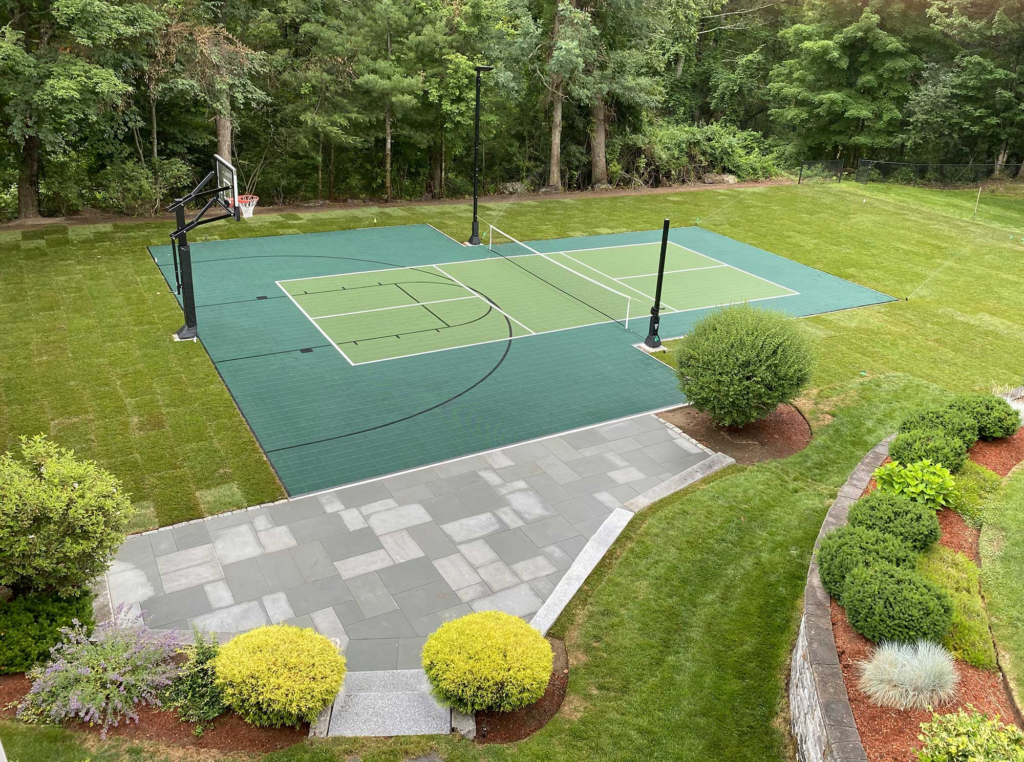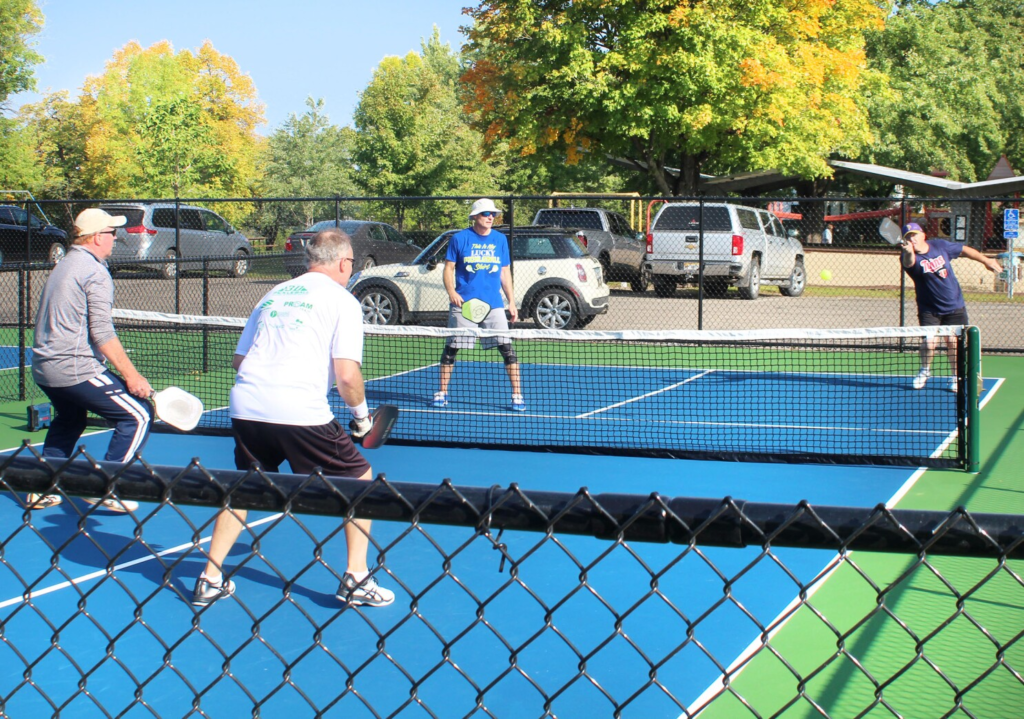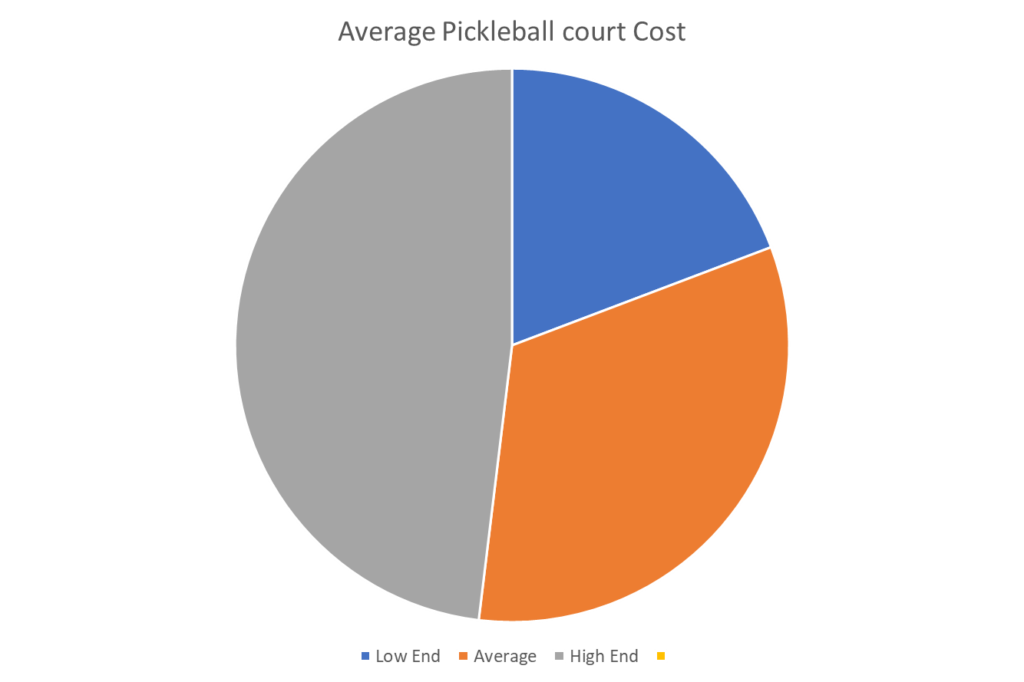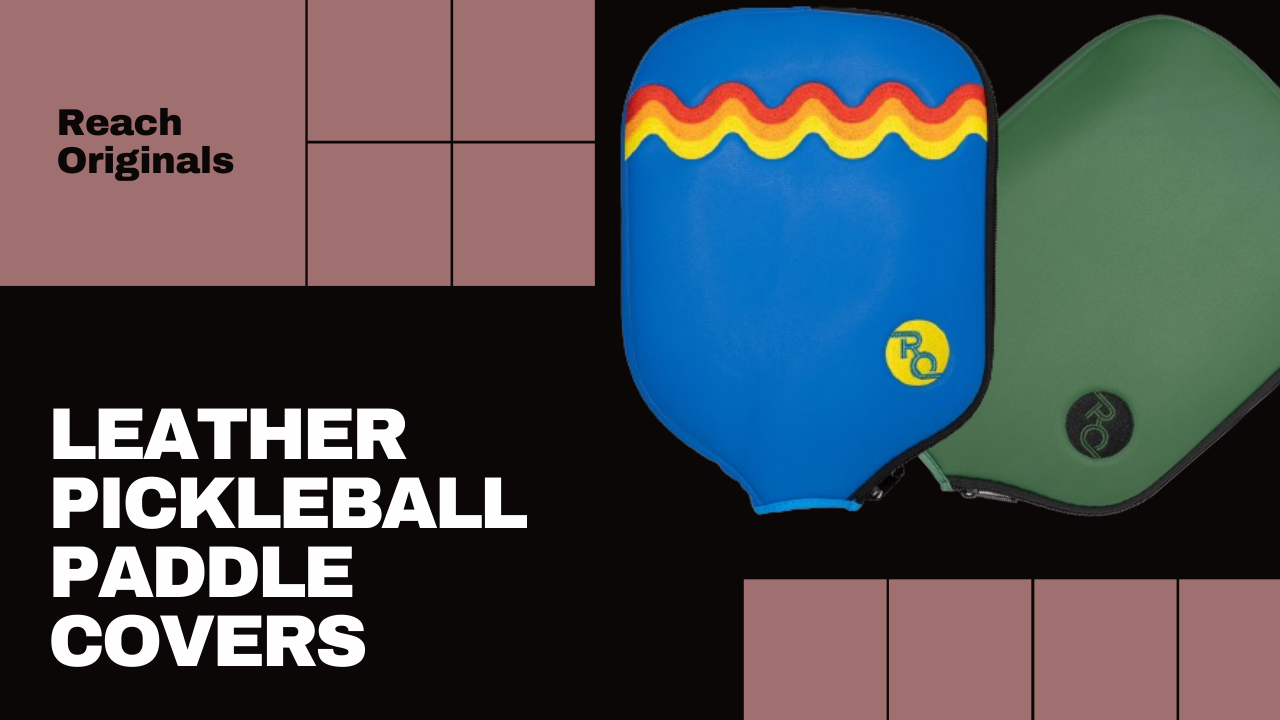From the exciting world of pickleball, greetings! If you’re a seasoned pickleball player or are interested in learning more about this quickly growing activity, having your own backyard pickleball court can be a terrific addition to your home. Pickleball, which mixes elements of ping-pong, badminton, and tennis, is a game that can be played for limitless hours and fosters competition, fun, and camaraderie.
In this introduction, we’ll discuss how much it will cost to build a pickleball court in your backyard. You can create a beautiful leisure atmosphere at home if you plan properly and make the necessary investments. There are many factors to consider, such as court size, surface type, and accessories.
Whether you’re a keen beginner, an experienced player, or a family striving to promote an active lifestyle, having a pickleball court in your backyard is sure to bring joy and excitement for years to come. So let’s examine the basics of building a pickleball court to help you decide on this intriguing effort!
Understanding Pickleball

Let’s briefly define pickleball before getting into the cost to install a court in your backyard. A paddle sport called pickleball combines aspects of table tennis, badminton, and tennis. Similar to a tennis court but smaller in size, it is played on a rectangular court with a net in the centre. People of all ages and skill levels can enjoy the game, which is played with a wiffle ball and paddles.
Benefits of Having a Pickleball Court in Your Backyard

A pickleball court in your backyard can provide a variety of advantages that support both social and physical elements of life. The following benefits come with having a pickleball court on your property:
Keep Moving and Healthy: Pickleball is a lively activity that gives you a fantastic exercise. Playing consistently helps promote physical strength, flexibility, coordination, and cardiovascular health.
Family Bonding: Playing pickleball together on a court promotes families to spend time together. People of all ages can engage in it, making it the ideal opportunity for family bonding and preserving precious memories.
Social Interaction: Having a pickleball court can facilitate social interaction between neighbours and friends. It offers a location for friendly competitions, social events, and building community.
Convenience: You can play whenever you want without having to go to a nearby facility if you have a court in your backyard. It provides the flexibility of spontaneous games whenever the mood strikes.
Improved Skills: Having regular access to the court allows players to hone their pickleball techniques. As a result, kids can take pleasure in the game more and possibly think about taking part in competitions or tournaments.
Privacy and Comfort: Playing in your backyard gives you a sense of privacy and comfort, which enables you to concentrate on the game without interruptions. Additionally, you can arrange locations nearby where people can unwind and watch the games.
Customization: If you have your own pickleball court, you can design it to suit your tastes. The court surface, lighting, and other amenities can all be customised to your preferences.
Mental Health Benefits: Pickleball and other forms of exercise can improve mental health by reducing stress, anxiety, and depression.
Accessibility: For those with mobility issues or those who prefer low-impact activities, pickleball offers a sport that is less physically demanding than some other sports.
Enjoyment All Year Long: Pickleball can be played indoors or on a covered court at any time of year.
Factors to Consider Before Building a Pickleball Court

To ensure the functionality, safety, and general enjoyment of the court, several crucial criteria must be taken into account before creating a pickleball court. The following are important things to bear in mind:
Space and Location:To see if your backyard or property has enough room for a pickleball court, measure the available space. Think on things like the size of the court, the surrounding space, and any potential impediments like trees or buildings.
Zoning and Permits: To make sure you can construct a pickleball court on your property, check the zoning rules and restrictions in your area. Before beginning building, obtain any required licences or authorizations.
Orientation and Sunlight: If possible, consider the court’s direction to prevent direct sunlight during busy times for play because it can make the surface overly hot. The best posture will increase pleasure and reduce weather-related problems.
Drainage: To avoid water accumulating on the court during rainy weather, adequate drainage is crucial. To maintain the court dry and secure, proper grading and drainage techniques should be used.
Court Surface: Based on your tastes and budget, select the right court surface. Asphalt, concrete, or artificial surfaces like rubber or acrylic are popular choices. Each surface has advantages and disadvantages that might effect aspects like gameplay, cost, and maintenance.
Fencing and Netting: To restrict the ball and improve safety, install appropriate fencing all around the court. In order to keep balls from exiting the court area, netting might also be necessary.
Lighting: Consider adding suitable lighting if you intend to play in the evenings or in poor light. Even after dusk, safe and joyful play will be possible with sufficient illumination.
Budget: Set a budget for the entire project, including the building costs, materials, and any extras. Pay attention to any continuing upkeep expenses as well.
Neighbors: Talk to your neighbours about your ideas, especially if the development of the court could have an impact on their property or way of life. Good connections can be maintained by being considerate and attending to their concerns.
Local Climate: Take into account the local climate because it may impact court surfaces and necessitate certain maintenance procedures due to severe temperatures, humidity, or weather conditions.
Safety Measures: To reduce the chance of injuries during play, incorporate safety elements such appropriate court markings, non-slip surfaces, and padding around hard surfaces.
Accessibility: By taking into account elements like entry ramps and appropriate court surface textures, you can make sure that the court is accessible to all possible players, including those who are disabled.
Maintenance: Be ready for routine maintenance, such as cleaning, resurfacing (if necessary), and equipment maintenance. The lifespan and condition of the court will be extended with proper care.
Cost Breakdown of Building a Pickleball Court

Depending on the type of court, location, materials, and additional amenities, the cost of constructing a pickleball court can vary greatly. The approximate cost breakdown for building a typical outdoor pickleball court is provided below to give you an idea of the potential costs involved:
Site Preparation: This include preparing the space, levelling the ground, and making sure the drainage is appropriate. Depending on the size and condition of the site, prices may change.
Court Surface: Your choice of court surface will have a big impact on overall cost. Here are a few typical choices: Asphalt: The least expensive choice, however it might need to be resurfaced frequently. Concrete: more pricey than asphalt, but more durable. Synthetic (Acrylic or Rubber): Lasts longer and requires less upkeep, but may be the most expensive option initially.
Fencing: To ensure player safety and keep the ball in play, the court must have fencing installed around it. The type of fence and its height will affect the price.
Net and Posts: Pickleball nets and posts are available in a range of costs and quality. Professional-grade solutions might cost more, but they last longer.
Lighting: You will need the right lighting fittings and installation if you intend to play in the evenings or in low light.
Accessories: Court lines, boundary markers, and any other tools, such as ball machines or storage options, are considered accessories.
Regulations and permissions: Take into account any expenses related to acquiring permissions and following local laws.
Labor Costs: Cost of labour for building the court, including the price of hiring workers or contractors to prepare the site, install the court’s surface, install the fencing, and perform other activities.
Optional Amenities: You can think about including seating places, spectator seating, or shade structures, depending on your tastes and financial constraints.
It’s crucial to keep in mind that prices can vary greatly depending on your region, local labour costs, and the degree of personalization you select. An approximate cost range for constructing a typical outdoor pickleball court is $10,000 to $40,000 or more.
It is advised to get estimates from many vendors and contractors to compare prices and options for more accurate pricing. Additionally, some firms that build pickleball courts provide turnkey services that include all required supplies and labour, which could streamline the process and give a more precise cost breakdown.
DIY vs. Professional Installation Costs

For those with building knowledge and access to the appropriate tools, installing a pickleball court themselves may be an alternative. But it’s crucial to assess the advantages and disadvantages of DIY installation vs professional installation, especially in terms of expenses and possible results.
Costs of DIY Installation: The main benefit of a DIY installation is the possibility for labour cost savings. You can save money by completing the work yourself rather than hiring a professional. But remember that you’ll still need to buy everything, including the court surface, fencing, net, and posts, as well as any required tools. The entire cost can vary greatly depending on the intricacy and size of the court.
Additional things to think about when performing DIY installation:
- Skill Level: Some knowledge and experience in construction is necessary for DIY installation. If you lack prior experience with this kind of work, it could take longer and result in blunders that increase expenditures.
- Time: Setting up a pickleball court on your own might take a lot of time, especially if you have other obligations or limited free time.
- Quality: The court’s build quality could not be as high as that of a professionally constructed court, which could have an impact on how long it lasts and how well it performs over time.
- Guarantees: Professional installations frequently include warranties and guarantees; DIY installs may not.
Costs of Professional Installation: There are a number of benefits to having your pickleball court installed by a professional provider, including:
- Expertise: Professionals have the skills and knowledge required to ensure that the court is constructed properly and in accordance with industry standards.
- Efficiency: Professional installation teams can finish the job faster than DIYers, cutting down on downtime and allowing you to use the court sooner.
- Quality Assurance: Assurance of Quality: With expert installation, you can anticipate a high-quality court that is made to last and operate well over time.
- Warranty: Reputable businesses frequently give warranties on their work, giving customers peace of mind in the event that problems do occur.
Professional installation can save you time, effort, and potential headaches associated with DIY projects, even though it often has a higher initial cost due to labour costs. A properly installed court may also be more durable and of higher overall quality, which would make the cost justified.
The choice between DIY and professional installation ultimately comes down to your level of expertise, time constraints, financial constraints, and the amount of performance and quality you want for your pickleball court. DIY may be a cost-effective choice if you have the proper tools and confidence in your own skills. However, employing a reputed business for installation may be the preferable option if you like a well-made court and want the confidence of professional skills.
Additional Considerations
It’s crucial to bear in mind a few other factors when estimating the cost of creating a pickleball court:
1. Permitting and Regulations
For further information on any permissions needed to build a sports court in your backyard, check with your local government. A seamless construction procedure is ensured by following the rules.
2. Maintenance
To maintain the best possible conditions and extend the lifespan of your court, don’t forget to budget for routine maintenance.
3. Professional Help
Hiring a qualified contractor with experience in creating Pickleball courts can give piece of mind to individuals who desire a hassle-free process.
Total Cost Estimates
After examining each cost component separately, let’s determine how much it will cost to construct a pickleball court in your backyard. Remember that these costs are estimates and may change depending on your unique needs:
$3,001 to $10,000 for the court surface
Court Dimensions: $0 to $2,000 (expensive for larger courts)
$1,500 – $5,000 for fencing
$2,000 to $5,000 for lighting
Accessories for courts: $200 to $500
Labour in construction: $5,000 to $10,000
Cost ranges from $11,700 to $32,500 overall.
Maintaining Your Pickleball Court

To keep your pickleball court in good shape, increase its longevity, and guarantee a secure and fun playing experience, proper maintenance is necessary. Here are some pointers for keeping your pickleball court in good shape:
Regular Cleaning: Sweep the court frequently to get rid of dirt, leaves, and debris. Keep the surface clean by using a push broom or a leaf blower. Use a mild detergent diluted with water and gently scrub the afflicted areas to remove harder stains or markings.
Resurfacing: In order to maintain a level and smooth playing surface, resurfacing may be required every few years, depending on the material used for the court’s surface. For specialised resurfacing advice, speak to experts or court makers.
Crack and Damage Repair: To stop future degradation, take immediate action to repair any cracks or damage on the court surface. Use the proper crack fillers or patching materials to fix tiny cracks.
Examine the Net and the Fencing: Frequently examine the fencing for any dents or other issues that might require repair. Make sure the net is in good shape and is correctly tensioned, as well as the net poles.
Adjust Net Height and Center Strap: Verify that the net height is set properly (36 inches at the sidelines and 34 inches in the centre) and adjust the centre strap. To keep the right net height, adjust the centre strap’s tension.
Manage Drainage: To avoid water collecting and potential surface damage, make sure the court’s drainage system is operating properly.
Maintain Control of Vegetation: Keep weeds and grass away from the fences and court margins. Trim dangling branches to prevent accumulation of debris on the court.
Manage Standing Water: After a downpour, clear the court surface of any standing water to avoid damage and slipping hazards.
Protect from Extreme Weather: To prolong the life of the court in areas that experience extreme weather, such as intense heat or cold, think about covering it or implementing protective steps.
Use Proper Footwear: Encourage participants to wear non-marking athletic shoes made for court sports in order to save wear and tear on the surface.
Maintain All Court Equipment in Good Condition: Ensure that all court equipment, including paddles and balls, are kept in good condition so that it is safe to use.
Keep Repairs Up to Date: Routinely check all court components, such as lines, fences, netting and lighting (if necessary). Any problems should be resolved right away to avoid future harm.
Seasonal Maintenance: Specific seasonal maintenance duties may need to be taken into account depending on the climate in your area. Winterizing the court, for instance, can assist safeguard it against freezing temperatures in colder climates.
You can guarantee that your pickleball court will continue to be a secure and pleasurable location to play for many years to come by adhering to these maintenance suggestions and being proactive in taking care of your court.
Conclusion
Finally, having a pickleball court in your backyard may be a great addition and have a lot of positive effects on your life. It provides a chance for exercise, encouraging a healthy lifestyle for you and your family. The court also offers a venue for social engagement, encouraging relationships with friends, neighbours, and family members through entertaining matches and gatherings.
It’s important to think about a number of things when establishing a pickleball court, including space, location, permits, and the court’s orientation. Other crucial considerations include making sure there is adequate drainage, choosing the suitable court surface, and spending money on safety measures.
The costs associated with constructing a pickleball court include site preparation, the court surface, fencing, a net, lights, and extra amenities. DIY installation may seem more affordable, but it needs specialised knowledge and cannot always be relied upon to provide the same degree of quality and longevity as a court that has been professionally constructed. Professional installation gives experience, efficiency, and superior results in terms of court performance and longevity, even though it is initially more expensive.
Regular upkeep is essential to keep your pickleball court in good condition. The court must be maintained through routine cleaning, rapid repair of cracks and damages, drainage control, and equipment maintenance. You can make sure that your pickleball court stays a secure, welcoming, and entertaining area for years by according to these upkeep instructions.
In conclusion, setting up and maintaining a pickleball court can result in many hours of physical enjoyment, richer social interactions, and increased property value. A pickleball court in your backyard can be a worthwhile investment that supports a healthy, active, and engaging lifestyle, whether you’re a pickleball fan or searching for a way to bring people together.
Frequently Asked Questions (FAQs)
What is the ideal size of a pickleball court?
A standard pickleball court size is 20 feet wide by 44 feet long for both singles and doubles play. The court is divided into two equal halves by a 34-inch-high net.
What are the popular court surface options for pickleball courts?
Popular court surface options include asphalt, concrete, and synthetic materials like acrylic or rubber. Each surface type has its advantages and disadvantages, affecting factors such as gameplay, maintenance, and cost.
How much does it cost to build a pickleball court?
The cost of building a pickleball court can vary based on factors like the court type, location, materials used, and additional amenities. It can range from $10,000 to $40,000 or more for a standard outdoor court. Professional installation and customization may increase the total cost.
Can I build a pickleball court myself (DIY)?
Yes, you can build a pickleball court yourself if you have the necessary construction knowledge and equipment. DIY installation might save on labor costs, but it requires a certain skill level and time commitment.
What is the best way to maintain a pickleball court?
Regular cleaning, prompt repair of cracks and damage, proper drainage management, and regular inspections are crucial for maintaining a pickleball court. It’s essential to address maintenance tasks promptly to keep the court in good condition and ensure player safety.




I do not even understand how I ended up here, but I assumed this publish used to be great